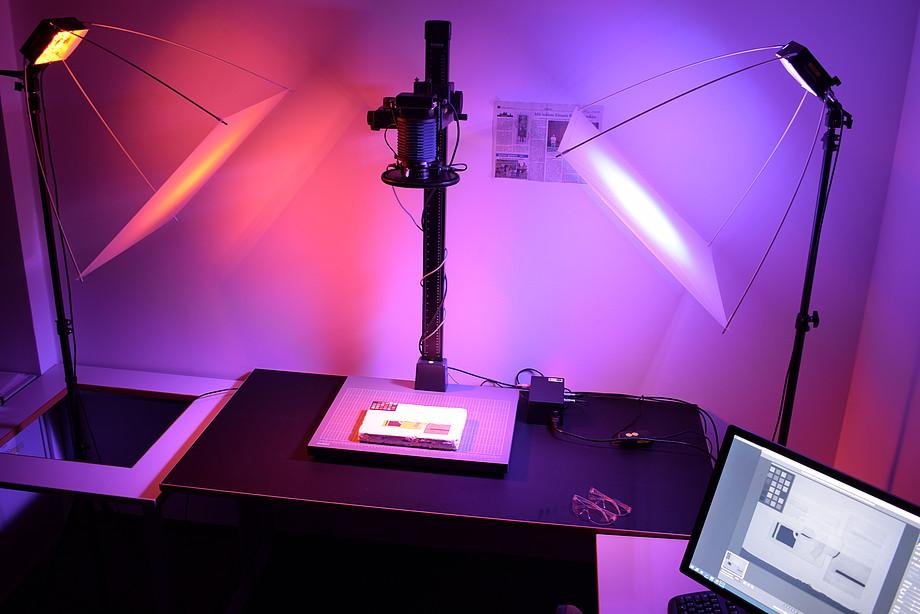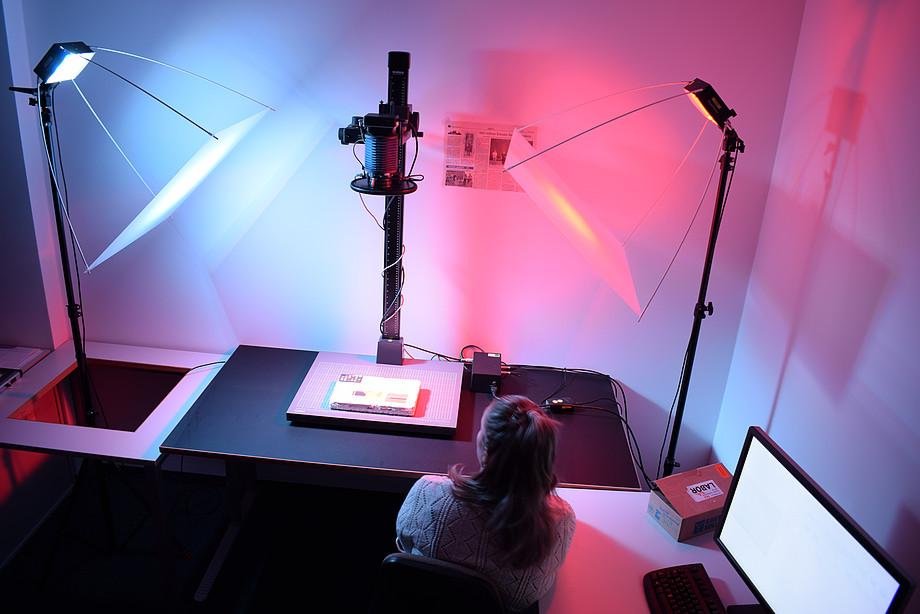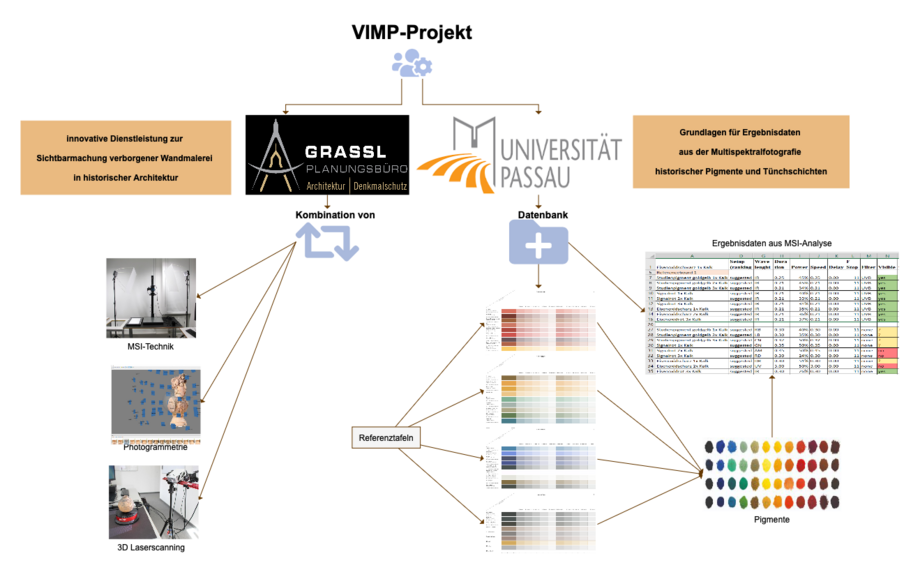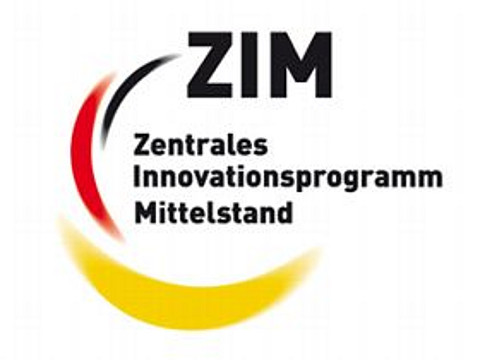Details
Development of a new and innovative service for visualising hidden wall paintings in historical architecture



In a joint research and development project, the Chair of Digital Humanities and the Grassl planning office are developing a new and innovative service to make hidden wall paintings in historical architecture visible.
The R&D cooperation project is supported by the “Central Innovation Program for SMEs” (ZIM) funding program with funds from the Federal Ministry for Economic Affairs and Climate in the amount of €344,000. The focus of the project is on companies and research institutions for the development of innovative products, processes or technical services .
Through contacts in the BNI network, in which Thomas Graßl has been working for years, the crucial contacts with HEIQ RAS AG from Regensburg as a funding consultant were established. With their help, the research project was applied for and approved by the Federal Ministry at the end of December 2022. The aim of the project is to develop a new, innovative technological service through multispectral examination of paintings in historical buildings that are worthy of protection and hidden under layers of whitewash.
The Grassl Planning office specializes in architecture, monument protection and surveying and is always looking for new challenges. In many projects, Thomas Grassl encountered the problem of dealing with hidden wall paintings in historical buildings. In the existing cooperation work between the Grassl planning office and the University of Passau as part of the master's degree in cultural industries, further discussions on technical and scientific possibilities arose. This is how the idea of wanting to make invisible cultural assets visible together arose.
Digitization of cultural assets has been a central research topic at the Chair of Digital Humanities at the University of Passau for years. Under the project management of research assistant Nina Kunze, the contribution of the scientific assistant Mirela Zagrean and the supervision of chair holder Prof. Dr. Malte Rehbein, innovative technologies, such as the multispectral camera available in the laboratory, will now be used and transferred into practice. Nina Kunze will also be writing her doctoral thesis on this topic.
| Principal Investigator(s) at the University | Prof. Dr. Malte Rehbein (Dekanat Philosophische Fakultät) |
|---|---|
| Project period | 17.01.2023 - 16.01.2025 |
| Source of funding |  BMWK - Bundesministerium für Wirtschaft und Klimaschutz > BMWi - ZIM > BMWi - ZIM - KOOP > BMWi - ZIM - KOOP - KF FuE-Kooperationsprojekt |
| Projektnummer | KK5456401 FG2 |

